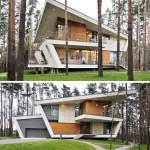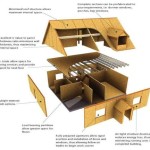New home house plans are blueprints that provide a detailed visual representation of a proposed new home. They include specifications for every aspect of the home, from the foundation to the roof, as well as the interior layout, electrical and plumbing systems, and any other relevant details.
New home house plans are essential for obtaining building permits and ensuring that the home is built according to code. They also provide a clear understanding of the home’s design and allow for any necessary modifications to be made before construction begins.
In the following sections, we will explore the different types of new home house plans, the benefits of using them, and how to choose the right plan for your needs.
When it comes to building a new home, one of the most important decisions you will make is choosing a house plan. A well-designed house plan will provide a clear blueprint for your home’s construction, ensuring that it is built to your exact specifications and meets all applicable building codes.
- Define room sizes and shapes
- Specify the location of windows and doors
- Indicate the type of materials to be used
- Show the layout of plumbing and electrical systems
- Provide a detailed elevation of the home’s exterior
- Include a floor plan for each level of the home
- Show the location of all appliances and fixtures
- Specify the type of foundation to be used
Choosing the right house plan is essential to ensuring that your new home meets your needs and expectations. By taking the time to carefully consider your options, you can choose a plan that will provide you with a beautiful, functional, and comfortable home for years to come.
Define room sizes and shapes
One of the most important aspects of a house plan is defining the size and shape of each room. This will determine the overall layout of the home and how it functions. When defining room sizes and shapes, there are a few things to keep in mind:
- The purpose of the room: What will the room be used for? This will help you determine the minimum size and shape required.
- The flow of traffic: How will people move through the room? Make sure to leave enough space for furniture and walkways.
- The amount of natural light: How much natural light do you want in the room? This will help you determine the size and placement of windows.
- The overall style of the home: The size and shape of the rooms should complement the overall style of the home.
By taking all of these factors into consideration, you can create a house plan that meets your specific needs and desires.
Specify the location of windows and doors
The location of windows and doors is an important consideration in any house plan. Windows and doors allow natural light and ventilation into the home, and they can also provide views of the outdoors. When specifying the location of windows and doors, there are a few things to keep in mind:
- The purpose of the room: The purpose of the room will help you determine the size and placement of windows and doors. For example, a living room will typically have larger windows than a bedroom, and a kitchen will need a door to the outside for ventilation.
- The flow of traffic: Make sure to leave enough space around windows and doors for furniture and walkways. You don’t want to block access to a window or door with a piece of furniture.
- The amount of natural light: How much natural light do you want in the room? This will help you determine the size and placement of windows. South-facing windows will provide the most natural light, while north-facing windows will provide the least.
- The overall style of the home: The style of the home will also influence the location of windows and doors. For example, a traditional home will typically have symmetrical windows and doors, while a modern home may have more asymmetrical windows and doors.
By taking all of these factors into consideration, you can specify the location of windows and doors that will meet your specific needs and desires.
Indicate the type of materials to be used
The type of materials used in the construction of a home will have a significant impact on its durability, energy efficiency, and overall appearance. When indicating the type of materials to be used in a house plan, there are a few things to keep in mind:
The climate: The climate in which the home will be built will play a role in determining the type of materials that are best suited for use. For example, homes in cold climates will need to be built with materials that can withstand extreme temperatures and snow loads, while homes in warm climates may be able to use lighter materials.
The style of the home: The style of the home will also influence the type of materials that are used. For example, a traditional home may use materials such as brick and wood, while a modern home may use more contemporary materials such as steel and glass.
The budget: The budget for the home will also need to be taken into consideration when selecting materials. Some materials, such as natural stone and hardwood, are more expensive than others, such as vinyl and laminate.
Once you have considered all of these factors, you can begin to select the type of materials that will be used in the construction of your home. Here are a few of the most common types of materials used in house construction:
- Wood: Wood is a popular choice for house construction due to its strength, durability, and versatility. Wood can be used for framing, siding, roofing, and flooring.
- Brick: Brick is another popular choice for house construction due to its durability and fire resistance. Brick can be used for exterior walls, chimneys, and fireplaces.
- Concrete: Concrete is a strong and durable material that can be used for a variety of purposes in house construction, including foundations, walls, and floors.
- Steel: Steel is a strong and lightweight material that can be used for framing, roofing, and siding. Steel is often used in commercial construction, but it can also be used in residential construction.
- Glass: Glass is a versatile material that can be used for windows, doors, and skylights. Glass can allow natural light into the home and provide views of the outdoors.
By carefully selecting the type of materials to be used in your home, you can create a home that is durable, energy efficient, and beautiful.
Show the layout of plumbing and electrical systems
The layout of the plumbing and electrical systems is an important consideration in any house plan. These systems are essential for the proper functioning of the home, and they need to be carefully planned to ensure that they are safe and efficient.
The plumbing system includes all of the pipes, fixtures, and appliances that are used to distribute water throughout the home. This includes the water supply lines, the drain lines, and the fixtures such as sinks, toilets, and showers. The electrical system includes all of the wiring, outlets, and switches that are used to distribute electricity throughout the home. This includes the lighting, the appliances, and the heating and cooling systems.
When laying out the plumbing and electrical systems, there are a few things to keep in mind:
- The location of the water supply and the electrical panel: The water supply and the electrical panel are the starting points for the plumbing and electrical systems, respectively. These need to be located in a central location so that the pipes and wires can be easily distributed throughout the home.
- The flow of traffic: Make sure to leave enough space around plumbing and electrical fixtures for furniture and walkways. You don’t want to block access to a sink or an outlet with a piece of furniture.
- The future needs of the home: Consider how you might use the home in the future when laying out the plumbing and electrical systems. For example, if you think you might add a bathroom or a kitchen in the future, you should make sure to leave enough space in the plumbing system for these additions.
By taking all of these factors into consideration, you can create a plumbing and electrical layout that will meet your specific needs and desires.
Provide a detailed elevation of the home’s exterior
A detailed elevation of the home’s exterior is a drawing that shows the front, back, and sides of the home. It is typically drawn to scale and includes all of the architectural details of the home, such as the windows, doors, trim, and siding. An elevation drawing can help you to visualize the home’s exterior and to make sure that it is consistent with the overall design of the home.
- The front elevation: The front elevation shows the front of the home, including the main entrance and any other features such as a porch, balcony, or garage. The front elevation is typically the most important elevation, as it is the first thing that people will see when they approach the home.
- The back elevation: The back elevation shows the back of the home, including any features such as a patio, deck, or outdoor kitchen. The back elevation is important for ensuring that the home has a cohesive design and that all of the features flow together.
- The side elevations: The side elevations show the sides of the home, including any features such as windows, doors, or porches. The side elevations are important for ensuring that the home has a consistent design and that all of the features are properly proportioned.
- The roof elevation: The roof elevation shows the shape and pitch of the roof, as well as any features such as dormers, chimneys, or skylights. The roof elevation is important for ensuring that the roof is properly designed and that it complements the overall design of the home.
A detailed elevation of the home’s exterior can be a valuable tool for visualizing the home’s design and for ensuring that it is consistent with the overall style of the home. By carefully reviewing the elevation drawings, you can make sure that your new home is exactly what you have always dreamed of.
Include a floor plan for each level of the home
A floor plan is a drawing that shows the layout of a home’s interior. It includes the location of all of the rooms, as well as the doors, windows, and other features. Floor plans are typically drawn to scale and can be used to visualize the home’s interior and to make sure that it is functional and efficient.
- The main floor plan: The main floor plan shows the layout of the home’s main level. This typically includes the living room, dining room, kitchen, and any other rooms that are located on the main floor.
- The upper floor plan: The upper floor plan shows the layout of the home’s upper level. This typically includes the bedrooms, bathrooms, and any other rooms that are located on the upper floor.
- The lower floor plan: The lower floor plan shows the layout of the home’s lower level. This typically includes the basement, garage, and any other rooms that are located on the lower level.
- The roof plan: The roof plan shows the layout of the home’s roof. This typically includes the shape and pitch of the roof, as well as any features such as dormers, chimneys, or skylights.
Including a floor plan for each level of the home is an important part of any house plan. Floor plans can help you to visualize the home’s interior and to make sure that it is functional and efficient. By carefully reviewing the floor plans, you can make sure that your new home is exactly what you have always dreamed of.
Show the location of all appliances and fixtures
The location of all appliances and fixtures should be carefully considered in any house plan. Appliances and fixtures are essential for the proper functioning of the home, and they need to be placed in a way that is both convenient and efficient.
- Kitchen appliances: The kitchen is the heart of the home, and it is important to make sure that the appliances are placed in a way that makes it easy to cook and entertain. The refrigerator, stove, oven, and microwave should be placed in a convenient location, and there should be enough counter space for food preparation.
- Bathroom fixtures: The bathroom is another important room in the home, and it is important to make sure that the fixtures are placed in a way that is both convenient and comfortable. The sink, toilet, and shower or bathtub should be placed in a way that makes it easy to use, and there should be enough storage space for toiletries.
- Laundry appliances: The laundry room is an essential part of any home, and it is important to make sure that the appliances are placed in a way that makes it easy to do laundry. The washer and dryer should be placed in a convenient location, and there should be enough space for sorting and folding clothes.
- Other appliances and fixtures: In addition to the kitchen, bathroom, and laundry room appliances, there are a number of other appliances and fixtures that need to be placed in a house plan. These include things like the furnace, air conditioner, water heater, and electrical panel. These appliances and fixtures should be placed in a convenient location, and they should be properly vented and installed.
By carefully considering the location of all appliances and fixtures, you can create a house plan that is both functional and efficient. This will make your home more enjoyable to live in and will help you to get the most out of your investment.
Specify the type of foundation to be used
The type of foundation used in a house plan is an important consideration, as it will affect the overall strength and stability of the home. There are several different types of foundations that can be used, each with its own advantages and disadvantages.
The most common type of foundation is the slab foundation. A slab foundation is a single piece of concrete that is poured directly on the ground. Slab foundations are relatively inexpensive to install and are well-suited for homes that are built on level ground. However, slab foundations are not as strong as other types of foundations and are not recommended for homes that are built in areas with expansive soils or high water tables.
Another common type of foundation is the crawlspace foundation. A crawlspace foundation is a concrete or block foundation that is built with a crawlspace beneath the home. Crawlspace foundations are more expensive to install than slab foundations, but they are also stronger and more durable. Crawlspace foundations are a good option for homes that are built in areas with slopes or uneven ground.
A third type of foundation is the basement foundation. A basement foundation is a concrete or block foundation that is built with a full basement beneath the home. Basement foundations are the most expensive to install, but they are also the strongest and most durable. Basement foundations are a good option for homes that are built in areas with cold climates or high water tables.
The type of foundation that is best for a particular home will depend on a number of factors, including the soil conditions, the climate, and the budget. It is important to consult with a qualified builder to determine the best type of foundation for your home.










Related Posts








